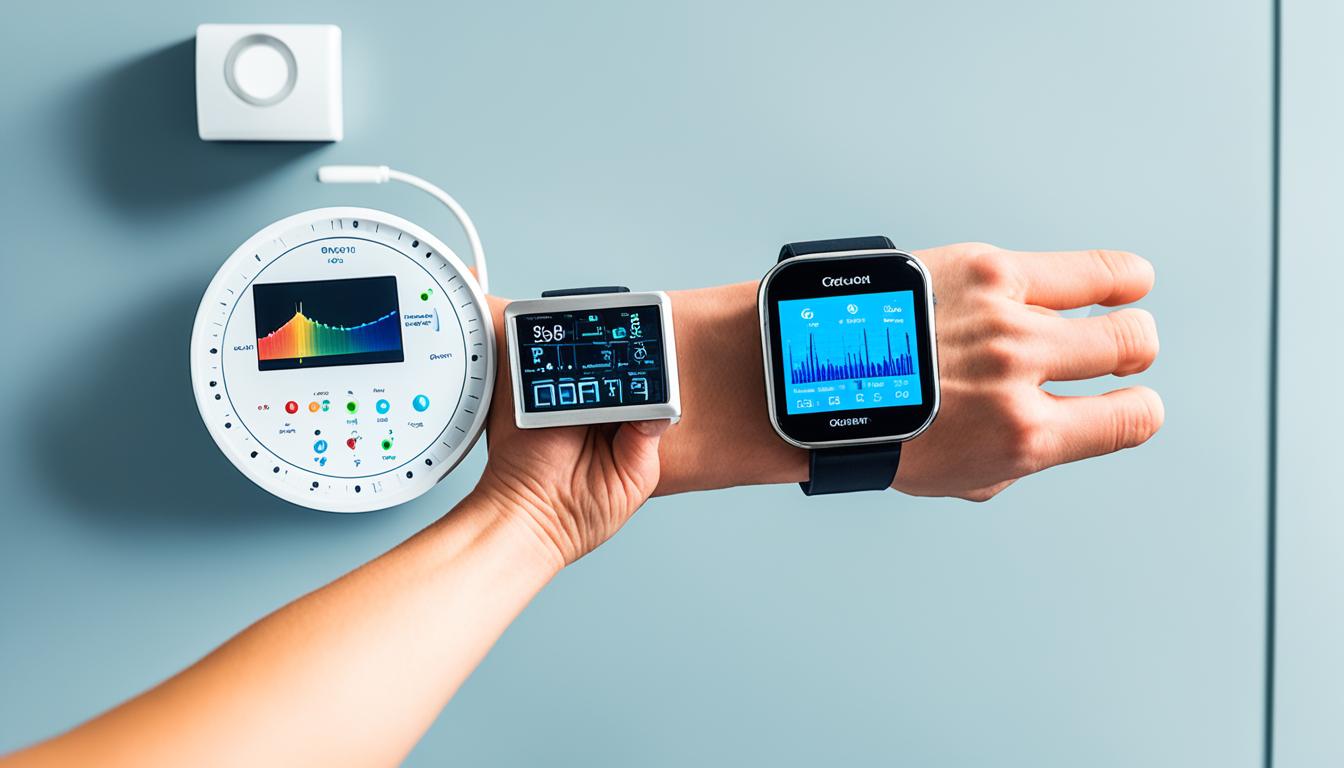Disclosure: This Post Contains Affiliate Links; We earn a commission on purchases.
EMF sensitivity, also known as electromagnetic hypersensitivity, is a condition that affects individuals when they are exposed to electromagnetic fields (EMFs) emitted by various electronic devices and technologies. People with EMF sensitivity experience a range of symptoms that can vary from person to person, including headaches, fatigue, dizziness, tingling or burning sensations, sleep disturbances, and difficulty concentrating. Exposure to EMFs can also trigger anxiety or panic attacks in sensitive individuals.
While the exact cause of EMF sensitivity is still unclear, it is believed to be influenced by factors such as genetic predisposition, underlying health conditions, and cumulative exposure to EMFs over time. This condition can significantly impact an individual’s quality of life, making it essential to understand the signs and symptoms associated with EMF sensitivity and explore strategies for managing and reducing exposure to EMFs.
Key Takeaways:
- EMF sensitivity refers to a condition in which individuals experience symptoms when exposed to electromagnetic fields.
- Symptoms of EMF sensitivity include headaches, fatigue, dizziness, tingling sensations, sleep disturbances, and difficulty concentrating.
- The cause of EMF sensitivity is still unclear, but it may be influenced by genetic factors, underlying health conditions, and cumulative exposure to EMFs.
- Managing and reducing exposure to EMFs is crucial for individuals with EMF sensitivity to improve their overall well-being.
- Seeking support from healthcare professionals and exploring treatment options can help individuals effectively manage their symptoms and lead a healthier life.
Common EMF Sensitivity Signs and Symptoms
Individuals experiencing EMF sensitivity may exhibit various signs and symptoms when exposed to electromagnetic fields (EMFs). These symptoms can appear immediately or have a delayed onset, depending on the individual. It is important to recognize and understand these common signs and symptoms to effectively manage EMF sensitivity and enhance overall well-being.
Headaches: Headaches are a frequent complaint among individuals with EMF sensitivity. These headaches can range from mild to severe and may occur during or after exposure to EMFs.
Fatigue: Feelings of exhaustion and fatigue are common symptoms experienced by individuals with EMF sensitivity. This persistent tiredness can significantly impact daily functioning and quality of life.
Difficulty Sleeping: EMF sensitivity can interfere with normal sleep patterns, leading to difficulties falling asleep, staying asleep, or experiencing unrefreshing sleep.
Dizziness: Dizziness or lightheadedness can occur when sensitive individuals are exposed to EMFs. This sensation can be disorienting and may lead to feelings of unsteadiness.
Irritability: EMF sensitivity can contribute to irritability and mood disturbances. The constant exposure to EMFs can exacerbate stress levels and emotional well-being.
Brain Fog: Cognitive difficulties, often referred to as “brain fog,” can be experienced by individuals with EMF sensitivity. This can manifest as difficulty concentrating, memory problems, and a general feeling of mental cloudiness.
Muscle and Joint Pain: Some individuals with EMF sensitivity may experience muscle and joint pain, which can range from mild discomfort to severe achiness. These symptoms may be localized or affect multiple areas of the body.
Skin Sensations: EMF exposure can lead to skin rashes, tingling sensations, or a burning feeling on the skin for some individuals with EMF sensitivity. These symptoms can be uncomfortable and cause significant distress.
Digestive Issues: Digestive disturbances, such as bloating, nausea, or abdominal discomfort, can occur in individuals with EMF sensitivity. These symptoms may be triggered or worsened by exposure to EMFs.
The severity of these symptoms can vary among individuals with EMF sensitivity. Some individuals may experience mild symptoms that are tolerable, while others may be severely impacted and require significant lifestyle adjustments.
Having a clear understanding of these common signs and symptoms of EMF sensitivity is crucial for individuals who suspect they may be affected. By recognizing these indicators, individuals can take proactive steps to reduce their exposure to EMFs, seek appropriate support, and effectively manage their symptoms for improved quality of life and overall well-being.
EMF Sensitivity Diagnosis and Management
Diagnosing EMF sensitivity can be challenging as there are no specific medical tests or diagnostic criteria to confirm the condition. It often involves ruling out other potential causes of symptoms and conducting a thorough evaluation of the individual’s medical history and exposure to EMFs.
Treatment for EMF sensitivity focuses on symptom management and reducing exposure to EMFs. Some strategies for EMF sensitivity treatment and relief include:
- Creating an EMF-free or reduced environment: Minimizing exposure to EMFs by establishing electromagnetic-free zones at home and work, such as using wired connections instead of wireless devices and limiting screen time.
- Using shielding materials or devices: Applying specialized shielding materials or using devices, such as EMF protection cases or shields, to minimize EMF exposure from electronic devices.
- Practicing stress reduction techniques: Managing stress levels through techniques like meditation, mindfulness, deep breathing exercises, and regular physical activity, which can help alleviate symptoms associated with EMF sensitivity.
- Incorporating lifestyle changes: Adopting a healthy lifestyle, including a balanced diet, regular exercise, and adequate sleep, as these factors can contribute to overall well-being and potentially reduce the impact of EMF sensitivity.
While these approaches can be helpful for many individuals, it’s important to note that the effectiveness of treatments may vary from person to person. Some individuals may also find relief through complementary and alternative therapies like acupuncture, herbal remedies, and energy healing practices.
It’s crucial for individuals with EMF sensitivity to consult with healthcare professionals who understand the condition and can provide personalized guidance and support. A comprehensive approach that combines symptom management and EMF protection strategies can help individuals better manage their condition and improve their quality of life.
EMF Sensitivity Management Strategies
| Strategy | Description |
|---|---|
| Creating an EMF-free or reduced environment | Establishing electromagnetic-free zones to minimize exposure to EMFs at home and work |
| Using shielding materials or devices | Applying specialized shielding materials or using devices to minimize EMF exposure from electronic devices |
| Practicing stress reduction techniques | Managing stress levels through meditation, mindfulness, deep breathing exercises, and regular physical activity |
| Incorporating lifestyle changes | Adopting a healthy lifestyle, including a balanced diet, regular exercise, and adequate sleep |
| Complementary and alternative therapies | Including acupuncture, herbal remedies, and energy healing practices |

The Impact of EMF Sensitivity on Daily Life
EMF sensitivity can have a significant impact on an individual’s daily life. The symptoms associated with EMF sensitivity can make it challenging to engage in everyday activities such as using electronic devices, working in environments with high EMF exposure, or spending time in public spaces where EMFs are prevalent.
It can also affect social interactions, employment, and overall mental and emotional well-being.
Individuals with EMF sensitivity may need to make adjustments to their living and working environments to minimize EMF exposure and manage their symptoms effectively.
It is essential for them to prioritize self-care and seek support from healthcare professionals who understand their condition.

Challenges in Everyday Activities
The symptoms of EMF sensitivity can make even simple tasks like using a smartphone or computer difficult. The electromagnetic fields emitted by these devices can trigger headaches, dizziness, or fatigue for individuals with EMF sensitivity. This can greatly impact their productivity and ability to work or study.
Moreover, public places such as airports, shopping malls, or offices are filled with electronic devices and wireless networks, resulting in heightened exposure to EMFs. This exposure can cause discomfort and exacerbate symptoms for individuals with EMF sensitivity, making it challenging for them to navigate these environments.
Social Interactions and Employment
EMF sensitivity can also affect an individual’s social interactions and employment opportunities. Attending social events or spending time with friends and family may become uncomfortable due to the presence of electronic devices or Wi-Fi routers. This can lead to isolation or feelings of being misunderstood.
In the workplace, individuals with EMF sensitivity may face challenges when it comes to finding suitable job opportunities or creating a conducive work environment. They may need to explore alternative career paths or request reasonable accommodations to minimize EMF exposure.
Mental and Emotional Well-being
Living with EMF sensitivity can take a toll on an individual’s mental and emotional well-being. The constant struggle to avoid EMF exposure and manage symptoms can be overwhelming, leading to increased stress and anxiety. In severe cases, individuals may even experience depression or panic attacks.
It is essential for individuals with EMF sensitivity to prioritize self-care and seek support from healthcare professionals who are knowledgeable about the condition. This may include implementing stress reduction techniques, practicing mindfulness, and engaging in activities that promote overall well-being.
By actively managing their EMF exposure and seeking appropriate support, individuals with EMF sensitivity can improve their daily lives and regain a sense of control over their well-being.
Conclusion
Understanding EMF sensitivity symptoms is crucial for individuals who experience this condition. By recognizing the signs and symptoms of EMF sensitivity, individuals can take steps to minimize their exposure to EMFs and manage their symptoms effectively. It is important to be proactive in creating an EMF-safe environment, seeking support from healthcare professionals, and exploring various treatment options to find relief.
While EMF sensitivity can be challenging to navigate, with proper management and understanding, individuals can improve their quality of life and optimize their overall health and well-being. Prioritizing EMF protection and taking steps towards symptom management are key in living a healthier and more comfortable life with EMF sensitivity.
Source Links
- https://www.menshealth.com/trending-news/a39049886/mystery-illness-lyme-disease-emf-essay/
- https://magazine.nd.edu/stories/i-am-an-emf-refugee/
- https://www.ncbi.nlm.nih.gov/pmc/articles/PMC6205043/

Subscribe to Our Newsletter









